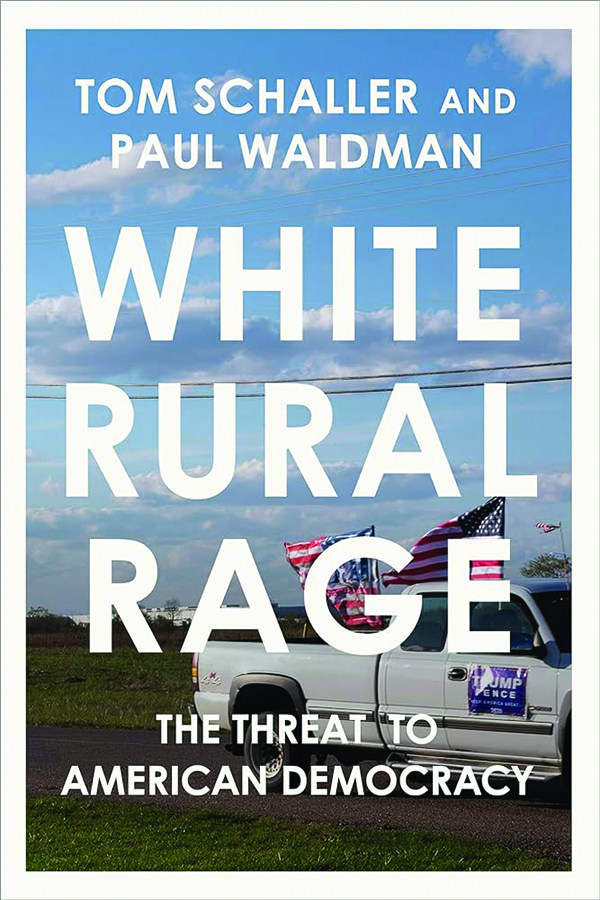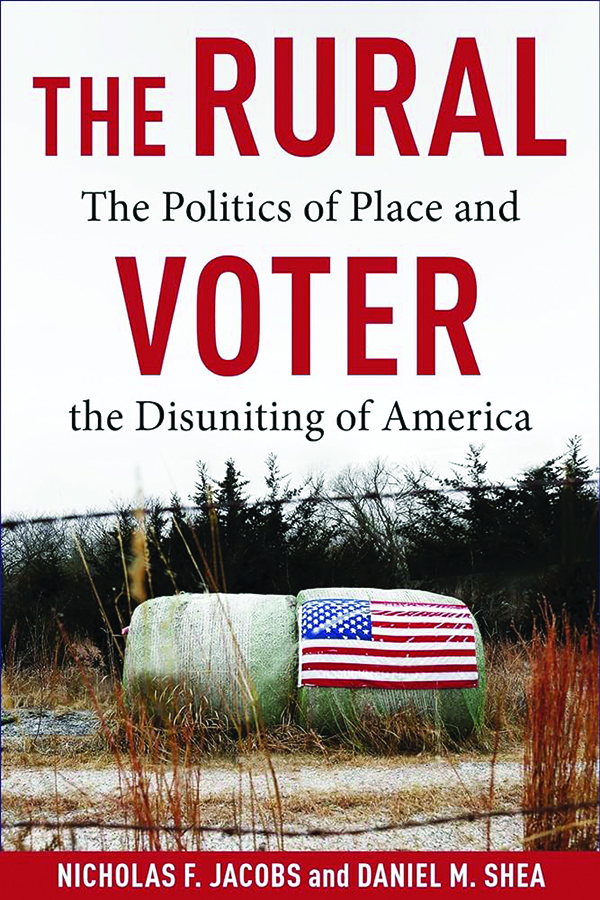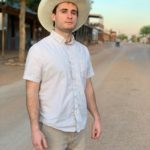
Yes, Herman Melville sold a lot of books before he died, but it was his Typee, an account of “life among the savages,” that captured the popular imagination, not the unloved and disregarded Moby-Dick. Perhaps the most depressing part of seriously studying English literature is realizing just how little of it was actually read at any point in history by anyone. The printing presses of the Western world before the 20th century were kept humming not by Hawthorne or the Brontë sisters but instead by hastily written and only accidentally factual travelogues meant to shock and titillate the respectable middle class in an era when it was always difficult, frequently dangerous, and occasionally fatal to leave one’s home country.

In 2024, rich people no longer fear international travel. They adore it. They’re addicted to it, at a level that would give Ozzy Osbourne pause. Instead, they’re terrified of “flyover country,” those nonplaces bereft of Starbucks and Apple stores but infested with toothless Deliverance caricatures who, in the words of Thomas Schaller and Paul Waldman, have created “what may be the most dangerous moment for American democracy since the Civil War.”
These two authors’ new book, White Rural Rage: The Threat to American Democracy, is aptly named, for it amounts to little more than an incoherent, but incessant, 301-page scream of rage against white people in rural areas. Schaller and Waldman present their entire case in the first eight of those pages, namely: White people have too much electoral power. They hate democracy and love Trump. They’re a serious problem about which something must be done. The authors immediately identify themselves, by contrast, as “cosmopolitans.”
Loosely garbed in the appurtenances of scholarly publication all the way down to a whimsically selected index, White Rural Rage is in practice just a stale soup of bad statistics, lovingly crafted stereotypes, and bizarre pretensions to omnipresence, as in the paragraph where the authors assert that “non-White rural women … are tragic victims of their White neighbors’ policy choices.” Were Schaller and Waldman in the voting booth with the nonwhite rural women in question? Do they have any genuine insight into how those people vote? Or is all of this just a dime-store Tristes Tropiques, written by people strangely eager to display their unfortunate ignorance of both Levi Strauss (the denim brand) and Levi-Strauss (the philosopher)?
Some aspects of the book would lend themselves to a drinking game: The word “vaccine” almost never appears without being preceded by “free,” “safe,” “lifesaving,” or two of the three terms combined. Others are already aging like milk, such as using the “Gretchen Whitmer kidnappers” as an example of organic and not-at-all-federally coerced “white rage,” though it was revealed at trial that FBI undercover informants provided at the very least a good shove to the plot in question, if not its entire execution. Still others are just silly: To point out the “disproportionate power” of rural whites, we are told that 93% of Fortune 500 CEOs are white. Surely they all grew up in a trailer park, right?

The authors go on to complain that “with clear eyes and full hearts, rural Whites recognized Trump’s exclusionary, reality-defying, undemocratic, and violent tendencies.” (Emphasis mine). What happened here? Did the authors think Friday Night Lights was a documentary? Were they inebriated at the time? If so, it would explain a lot about the math they misuse and misunderstand throughout the book. After frightening the reader with the specter of the “21 million potential insurrectionists” in the country, the authors then admit that just 30%, or maybe 27%, of those people are rural. Only 20% of noninsurrectionists are rural, so … that’s bad, right? “Not every citizen with violent, anti-government tendencies is rural,” they declaim, which is an odd way of saying that three-quarters of them aren’t.
Their worst innumeracy, however, is saved for the despised Electoral College. “The antiquated U.S. electoral system allows rural White Americans to hold the rest of the nation hostage,” the authors confidently state. It is at this point in the book’s bad argument and abuse of language that it reaches “not even wrong” territory. This a good time to put White Rural Rage down and pick up the similar, but far more extensively researched, The Rural Voter: The Politics of Place And The Disuniting Of America by Nicholas F. Jacobs and Daniel Shea.
Some aspects of The Rural Voter are nearly identical to White Rural Rage, from the authors’ insistence on being seen as cosmopolitan (“Our [Colby College] colleagues like to joke that we have ‘gone native,’” they assert before apologetically admitting that they “[grew] up alongside rural people”) to their veneration of Hillary Clinton. (The phrase “deplorables” is used with absolute sincerity.) Any one of these two books’ four professor-writers could easily pass for all of the others; is there a factory somewhere where plumpish, frightened-looking, slightly furtive, pale-faced academics are created? If so, why can’t we send that one overseas, with all the other factories?
Where the two books diverge, however, it is greatly to The Rural Voter’s credit. A remarkable amount of data from three separate polls covering more than 14,000 interviewees, as well as extensive recapitulations of findings from the General Social Survey of 1972 to the present day, lie behind most of the book’s assertions. Where White Rural Rage berates the reader with absurdly general conclusions and then “supports” them with a link to a single Guardian or New York Times article, The Rural Voter presents multiple survey or poll results, then offers potential, but not definitively stated, reasons for those results. To the hoary claim in White Rural Rage that “rural areas” receive more taxes than they contribute, The Rural Voter offers the counterexample of Virginia, whose residents receive three federal dollars for every one they send: “We know that the billions of dollars coming from the government are not going to the 25 percent of Virginians living in rural areas.”
It’s not surprising, therefore, that The Rural Voter addresses the Electoral College in a manner that is either more intelligent or more honest than that shown in White Rural Rage. While it’s true that 17% of the country lives in states that have 50% of the senatorial votes, a fact White Rural Rage is eager to share with the reader, that’s a measure of small state power, not rural power. Utah, for example, has just 3.4 million residents — but it is 90% urban by population. Having crunched the numbers further, The Rural Voter concludes that “a majority of rural residents live in states that are underrepresented (emphasis mine) in the Senate.”
In other words, the entire premise of White Rural Rage, the drumbeat of unfair electoral supremacy that is beaten by the authors dozens of times throughout the book, is mathematically incorrect. “These perversions of power,” the book thunders, “will worsen in the decades ahead,” which doesn’t seem all that scary if they don’t currently exist.
High school math is not the only area where The Rural Voter has the advantage. Regarding worsening economic conditions in rural areas, it discusses “NAFTA ghost towns” and clearly shows where their jobs and economic activity went. Rural White Rage, by contrast, tells us that “some might be tempted to say that this grim picture is entirely the fault of the people who live in these places.” The latter book, when discussing the 2016 election, claims “it was the backlash against [former President Barack Obama] that pushed Trump into the White House” and cites Ta-Nehisi Coates as an authority. The Rural Voter, on the other hand, uses data to clearly show that pro-Republican sentiment in rural areas began in 1980 and has increased on a more or less predictable slope since then. “It is puzzling,” the White Rural Rage authors admit, regarding the rural counties that went for Obama but then voted Trump. Well, maybe it’s not so puzzling if you look at the data rather than reading Ta-Nehisi Coates.
The Rural Voter is, for all its unpleasant ideological biases, a pretty standard, and reasonably researched, book. Which perhaps explains why it is being vastly outsold by White Rural Rage, a naked and unapologetic statement of racial and/or class animus that itself exemplifies every unpleasant characteristic it purports to discover in its subjects, even to the final sentence. “The actual threat emanating from rural White corners of the nation,” Schaller and Waldman caution, “is surely more dire than we depict in our book’s findings and warnings.” Herman Melville, one suspects, would understand. Like Ahab on Moby-Dick’s final page, the authors have cast their harpoon into the vast whiteness with all the hatred at their disposal. But remember: Ahab was the villain of that story.
CLICK HERE TO READ MORE FROM THE WASHINGTON EXAMINER
Jack Baruth was born in Brooklyn, New York, and lives in Ohio. He is a pro-am race car driver and a former columnist for Road and Track and Hagerty magazines who writes the Avoidable Contact Forever newsletter.












